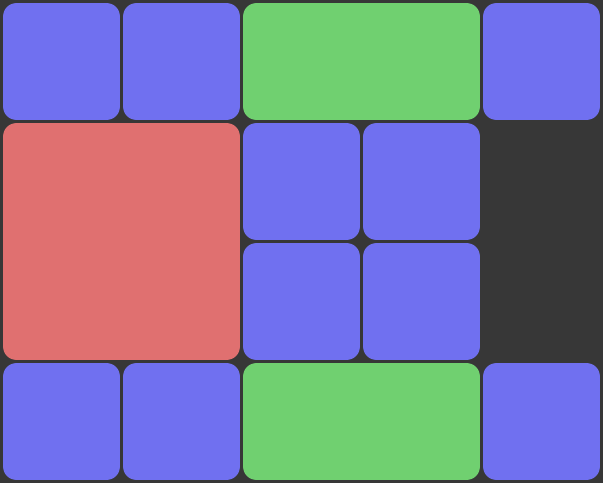
The first published 81-step solution is by Martin Gardner, in the February 1964 issue of Scientific American. The minimum number of moves for the original puzzle is 81, which is verified by computer to be the absolute minimum for the default starting layout, if you consider sliding a single piece to any reachable position to be a single move. The above facts suggest that unless a 19th century Asian evidence is found, the most reasonably likely path of transmission is from the late 19th century square designs to early 20th century rectangular such as Pennant, thence to Klotski and Huarong Road. The puzzle concerned has the same blocks and almost identical placement as forget-me-not, only that the unique horizontal 2×1 block is placed at the bottom instead of beneath the 2×2 block. John Harold Fleming obtained patent for a puzzle in 1934 in England, with almost identical configuration as described in this page. (translation: Scientific mindset training and pastime) (translation: Science Pastime) This book has been republished as 姜长英 (1997). One of the earliest books about standard Klotski was written by the Chinese professor Jiāng Cháng Yīng of Northwestern Polytechnical University in 1949,in his book 科学消遣. The first account of occurrence of Klotski in China is in Shaanxi Province, where Lín Dé Kuān of Northwestern Polytechnical University noted children in a village playing a version of Klotski made with pieces of paper in 1938. One source writes that the game was already known in Japan around the 10th year of the Shōwa period, i.e. The Chinese design, commonly using Chinese names for the heroes, villains, and soldiers, has clear inspiration from the Chinese version of chess, which problematizes the origins of the genre of sliding puzzles. Popular versions of Huarong Pass used cells with names or images of Han Dynasty heroes and villains, based on a famous battle from the Yuan Dynasty novel Romance of the Three Kingdoms. The Klotski puzzle-with its two-by-two and one-by-two cells and with the same 4 × 5 dimensions-also closely resembles the Chinese game Huarong Pass, also called Huarong Road. Patent 1,017,752 in 1907, which is about a sliding-block puzzle similar to Pennant Puzzle, but with a slightly different combination of blocks and a different goal-not only must the largest block be moved to a specific location, but all of the other blocks must achieve a specific configuration as well. The aim of this puzzle is identical to Klotski, and only its default blocks and arrangement are different. Hardy obtained copyright for a game named Pennant Puzzle in 1909, manufactured by OK Novelty Co., Chicago. Patent 668,386 in 1900 for a sliding puzzle of six squares and four rectangles, which is one of the first known occurrences of sliding puzzle with non-equal blocks. Patent 516,035 in 1893 for a sliding puzzle of identically shaped rectangles, which according to Edward Hordern, is the first known sliding puzzle with rectangular blocks.

Around this time, patents appeared for puzzles using differently shaped blocks. The 15-puzzle enjoyed immense popularity in western countries during the late 19th century.

One game-lacking the 5 × 4 design of Pennant, Klotski, and Chinese models but a likely inspiration-is the 19th century 15-puzzle, where fifteen wooden squares had to be rearranged. However, the early cognate of Klotski closest in design dates to 1909 in Chicago. There are many confusing and conflicting claims, and several countries claim to be the ultimate origin of this game. It is still unknown which version of the puzzle is the original. There was no known widely used name for the category of sliding puzzles described before Klotski appeared. The sliding puzzle had already been trademarked and sold under different names for decades, including Psychoteaze Square Root, Intreeg, and Ego Buster.


#Klotski game solutions windows
The earliest known reference of the name Klotski originates from the computer version for Windows 3.1 by ZH Computing in 1991, which was also included in Microsoft Windows Entertainment Pack. A screenshot of the "forget me not" level in the Windows Entertainment Pack version of the game


 0 kommentar(er)
0 kommentar(er)
